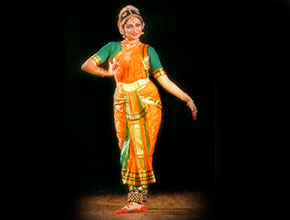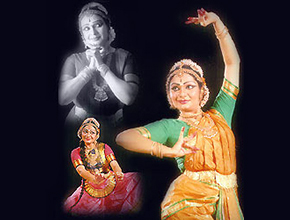Bharatanatyam is the most popular of Indian classical dances. Indian classical dance is a composite art - an art of poetry, music-vocal and instrumental, drama, colourful costumes and very expressive hand and facial gestures. It is widely practised in Karnataka and Tamil Nadu. At once a sensual and divine experience, it was performed in the temples by a group of dancers known as devadasis. An integral part of the religious rituals, it has a long and hoary past. The kings and the princely courts patronised the temples and thus its various traditions and the 'dance' form drew its sustenance.
It has many vehicles of _expression - its two notable aspects are Nritta and Nritya. In Nritta, the dancer executes patterns with the movements of the limbs to the chosen time cycle. Pure dance reveals the architectonic beauty of the form in a display of visual geometry. Nritya (or mimetic dance) is meaningful interpretation of a song with movements, hand gestures and facial expressions to Raga, (melody), Tala, (rhythm), and Bhava, (_expression).
The theme of Indian classical dance draws heavily upon the riches of mythology and spiritual as well as secular poetry

